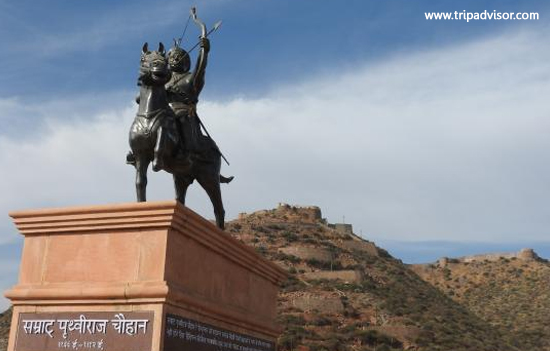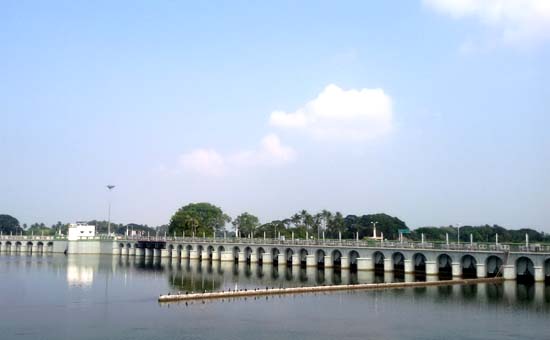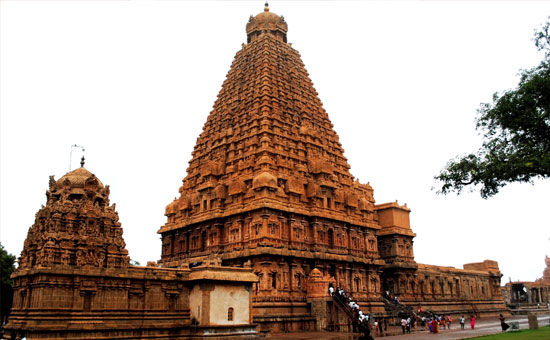- Precis
gives state of Indian society around 1000, why did it survive the earlier 2,000
years, status of Sanskrit and trade, social impact of Muslim invasions, South
Indian kings, rise of Desabhashas and Bhakti.
Shri
V Balachandran (ex-Special Secretary Cabinet Secretariat) wrote in The Tribune
Chandigarh Neglecting
cultural czar Munshi’s efforts
Respected
K
M Munshi was an educationist, freedom fighter, founder of Bharatiya
Vidya Bhawan (1938), author and worked closely with Sardar Patel. It was he who
initiated the writing of The History and
Culture of the Indian People. The 11 volumes are a masterpiece. It is my
constant reference book. Shri R.C. Mazumdar was the General Editor. Of volume
5, A.D. Pusalker and A.K. Majumdar were Assistant Editors.
K
M Munshiji said, “that although efforts to prepare this massive history-writing
had started in 1938, it could assume concrete shape only in 1944 with generous
help from GD Birla and the Shri Krishnarpan Charity Trust.”
Let
us hope these books become part of the educational system in schools and
colleges.
The
Tribune article goaded me to do a precis of Shri Munshi’s Foreword of Volume 5.
It covers 1000-1300 A.D. Precis is split in parts. Each part has a number and
title that represents content.
Excerpts
chosen are such that they provide information of historical events and answers for e.g. what was the state of Indian
society around 1000, why did it survive the earlier 2,000 years, status of
Sanskrit, social impact of Muslim invasions, why lower strata of society
adopted Islam, South Indian kings, rise
of Desabhashas and Bhakti.
My
only contribution is doing a precis of the foreword. This piece is courtesy the
publisher, Bharatiya Vidya Bhavan Mumbai.
The Struggle for Empire (period 1000-1300) Foreword
I Muslim invasion by Mahmud Ghazni
Dr
Munshi wrote, “The most crucial age in Indian history began in 998 A.D., when
the Turkish Mahmud captured Ghazni. It ended in 1292, then the Khalji Chief,
Jalal-us-din, proclaimed himself the Sultan of Delhi. It can be divided into 2
periods, the fist ending in 1193, when Ghori defeated Prithviraj Chahamana of
Ajmer, the second ending in 1299.
This
period has not been studied from an Indian point of view because the chronicles
written by the proteges of the invaders or their successors throw a dubious but
concentrated light on the narrow sector of life that their patrons dominated.
II State of Indian Society including Sanskrit and caste
The
year 1000 in my opinion divided Ancient from Medieval India. For over 2,000
years before, the culture of the dominant classes, developing in almost
unbroken continuity, had brought large sections of the people within its fold.
This
continuous vitality is a phenomenon, without appreciating which it is difficult
to study the epochs of Indian history in continuous time. Several factors
maintained it. Of the, perhaps the most important was ‘Aryavarta- consciousness’ which threw up values and institutions of
great vigour and tenacity.
It
was based on the faith that Bharatvarsha, was the sacred land of Dharma, ‘where
all knowledge, thought and worship was rooted in the Vedas, where Dharmashastras prescribed the
fundamental canons of personal life and social relations, where Chaturvarnya, the divinely ordered 4
fold order of society embraced all social groups, where whatever the dialect of
the people, Sanskrit, the language of the
Gods, was the supreme medium of high expression.’
The
Dharmasastras and by that is meant not only the Smritis beginning with Manu-smriti, but the Mahabharata have played a big very big
role in the life of the country.
Century
after century, the system first formulated by the Manu-smriti, was accepted throughout the country, never by force by
arms but in the belief that God gave it and the ancestors obeyed it. It was
found so acceptable because it had a revealing basis of reality, it was a
recognition of the temperamental inequalities of man, of the predominance of
hereditary influences over environments etc. Its fundamental aim was to produce
an urge towards human betterment.
These
values gave continuity to the way of life of even those sections who did not
accept the divine origin of the Vedas or Chaturvarnya.
They also provided homogeneity to widely differing communities and religious
cults and forms.
The
universal urge which they provided to go on a pilgrimage, generation after
generation which were conceived as physical manifestations of the Land of
Dharma, also kept alive an emotional awareness of unity and sanctity.
“Aryavarta
was so called because the Aryas sprang up in it again and again. Even when it
was overrun by the mlechchhas, they
could never abide there for long.” The tradition also had it that whenever a
crisis arose, a chakravartin, a world
emperor, would rise in the land and re-establish Dharma. South India, however,
knew no such significance, for it had never to face the problem of the mlechchhas till the 14th
century.
The
consciousness in its political aspects had all but disappeared during the few
decades which preceded A.D. 1000 on account of recent upheavals in North India.
At the turn of the 10th century, there was no military power in
North India strong enough to keep the warring kings in check, or to coordinate
their activities against any foreign invader.
III Rules by which Indian Kings fought, Mahmud annexed Punjab
After
the Hunas had been repulsed in the 6th century, the country was free
from any serious foreign invasions for about two centuries.
The
Indian kings, all of whom accepted, atleast in theory, the law of the
Dharmasastras as inalienable, waged wars according to certain humane rules.
Whatever
may be the provocation, the shrine, the Brahamana and the cow were sacrosanct.
War being a special privilege of the martial classes, harassment of the
civilian population during military operations was considered a serious
violation of the code of honor. The high regard the
Kshatriyas had for the chastity of women, also ruled out their abduction as an
incident of war.
The
wars in Central Asia, on the other hand, were grim struggles for survival, destruction of their
enemies and appropriating their womenfolk. No code existed.
Afghanistan-Delhi,
Kanuaj, Jejakabhukti sent men and money to help the Shahi kings (of
Afghanistan) defend their frontiers. But they were to fight & die bravely.
Mahmud
annexed Punjab, thereby opening the way to the hungry men from the steppes of
Central Asia to descend upon this rich and fertile land in search of plunder.
In a few years, Thaneswar, Mathura, Kanauj and Prabhasa Pattana were smoking
ruins. The raids of the Turks were, halted in the east by Vidyadharma Chandella
at Kalanjara and in the south-west, where Mahmud had to beat a hasty retreat
for fear of the federated armies of ‘Paramdeva’, whom I would identify with
Bhoja Paramara of Dhara (1000-1055).
IV Impact of Mahmud Ghani invasion
The
destruction and humiliation inflicted by Mahmud’s raids shocked India’s sense
of superiority, bringing into play several political, social and psychological
factors. With the Yaminis, successors of Mahmud, firmly established in Punjab,
the Aryavarta-consciousness lost whatever significance it had.
Indian
kings could not develop nationalism, because the country was too vast and times
unfavourable to the development of non-religious group sentiment of this
nature. Five more centuries had to elapse before nationalism became a force in
Europe.
During this age, the Brahmanas, Kshatriyas and Vaisyas were now
separate castes to which was denied the dynamic fluidity throughout the country
which it had earlier.
A king was no more the first among the equals, never in a position to overrule
the wishes of his feudal lords. Thus, the loyalties of the Kshatriyas became
rooted in the region over which they and their king held feudal sway.
V Ghori victory, Turkish Sultanate in Delhi
When
Ghori invaded in 1175 the impact was borne by 3 powerful princess i.e.
Prithiviraj of Ajmer, Jayachandra Gahadavala of Kannauj and Mularaja II
Chalukya of Gujarat. Mularaja drove him back in 1178, Chauhan in 1191, but no
two of them would combine. When Chauhan lost in 1192 and Jayachandra died
fighting, the Turkish cavalry swept over the plains of the Ganga.
In
1206, Qutb-ud-din Tibak established the Turkish Sultanate at Lahore, later
moved to Delhi. To these invaders nothing was
sacred. What the armies of Khilji did equally applied to the Turks. “The
conquering army burnt villages, devastated land, plundered people’s wealth,
took Brahmans, children and women of all castes captive and flogged them with
thongs and raw hide, carried a moving prison with it, and converted the
prisoners into obsequious Turks.”
The
Indian side of the picture was of ceaseless resistance offered with relentless
heroism of boys in teens, warriors, women courting fire in thousands to save
their honor, of fresh heroes springing up to take place of the dead.
About
the middle of the 13th century, the Mongols established themselves
in Afghanistan. So retreat to their homeland was
now cut-off for the Turks. This compelled them to make India as their
permanent home.
However,
inspite of military operations for over a century, the
core of the Sultanate comprised only of the central military base of Delhi and
surrounding districts within a radius of about 250 miles of it. The
frontier posts were no better than garrison posts from which the Turkish
satraps carried on raids against Indian chiefs, who held the rural areas. The
Indian resistance neither wavered not tired.![]()
 Prithviraj Chauhan Samadhi Sthal, Ajmer.
Prithviraj Chauhan Samadhi Sthal, Ajmer.
VI Impact of Muslim Rule on Society & Women
From
1192 A.D. when Chauhan lost the battle of Tarain, till 1301 when his
descendant, the heroic Hammiradeva, fell in the battle field, they defied the
Sultanate year after year. And so did the Katehrs.
The
Indians kings, steeped in their tradition of tolerance, could scarcely envisage
the danger to which their policies towards Islam exposed them.
Even
before the Turkish invasions some sects of Islam drifted into the country and
their religious and proselytising activities had not be interfered with. Once
Islam came to be enthroned in political power, the proselytising activities
became active, Hindus were denied right to public worship etc. Many communities
esp. in the lower strata of society took to the new faith to escape these
hardships. This led to the emergence of a distinct element in the population of
the country termed ‘Mussalmans’.
The
aggressive attitude of this new element in the population led to the religious,
cultural and psychological resistance on the part of the people, who came to be
referred to as Hindus. Hindus made compromises with the rulers when compelled,
served them. But they would not let them defile the
sanctity of their homes or castes, social and religious observances by encouraging
indiscriminate contact with Muslims.
People
succeeded in confining the ruler’s authority to the narrowest limits. They
tried to protect their religion, culture and social order. Women were segregated in their homes, infant marriages became almost universal. Self-immolation of women who lost their husband in battle became a supreme form of martyrdom. Caste divided and sub-divided but remained
unmixed. Even the process of betterment through which lower castes were
progressively raised to a higher status was slowed down or halted.
Except
for a few buildings like Qutub-minar, there is nothing to relieve the dreary
military character of the 13th century.
VII Area of Muslim Rule in North + South Indian Rulers, Cholas
Except
within areas in which Turkish armies operated, the India of the age belonged to
the heroes of resistance. Outside this area lay large parts of North India and
the whole of the South-in fact 3/4th of the country where India
followed its unbroken way of life and Hinduism flourished unobstructed.
In
North India, the areas of military resistance
were the old kingdoms of Dahala ruled by Kalachuris (11th century to
1212), Jejakabhukti ruled by the Chandelas (9th century to 1315),
Malwa ruled by the Pratiharas (10th century to 1305) and Gujarat
ruled by the Chalukyas and Vaghelas (940 to 1299).
In
the South the Western Chalukyas (973-1189),
the Yadavas (1185-1317), the Kakatiyas (1050-1322), the Eastern Chalukyas (999-1271)
and later Pandyas (11-14th centuries) and Hoysalas (1106-1343) ruled flourishing kingdoms. But the most important of them and briallant in cultural achievements was the empire of the Cholas of Tanjore (985-1250). Rajaraja Chola (985-1014) set up an efficient administration, ruled well and a great patron of art and literature. He built the Brihadesvara Temple. Under his son Rajendra Chola (1022-1044) the empire reached its zenith.
The Chola Emperors were the first to recognise the value of naval power. They won a colonial empire that embraced Ceylon, the Nicobar Islands, the Malaya Peninsula and Sumatra. Their administratrative organization had a strong centralized machinery and an efficient system of audit. They made the famous anicuts across the Kaveri. Literature blossomed and art flourished
under the Cholas.
 Dam across river Kaveri made by the Cholas
Dam across river Kaveri made by the Cholas
During
this period, the Hindu kingdoms of Suvarnadvipa formed part of
Dvipantara-Bharata, ‘India beyond the Seas’. They had close contacts with
India, and South India and Bengal influenced them considerably. Java continued
to be a powerful Hindu kingdom till the 15th century.
As
a result of the resilience of the social order as had been developed under the
influence of the Dharmasastras, most of the social activities were in the hand
of the social groups outside the sphere of local authority. Irrespective of the outcome of war the villages continued
to lead their own life. During this age, inspite of the ravages of the
Turks, India was still the land of great achievements.
VIII Intellectual Expansion Stops, Caste, Bhakti
Brahamasnas
continued to exercise tremendous influence on the mind and faith of people.
They led the renaissance, which can be appropriately called Purnanic.
By the end of the 13th century intellectual expansion
of North India halted abruptly. This can only be traced to the vast destructions of
the Universities and centres of learning in North India, by the Turks.
Nevertheless literature in Sanskrit flourished in most parts of India. It was
the age of Polymaths. The greatest creative work of the period- Jayadeva’s Gita-govinda is a unique poem in the
literature of the world.
IX Caste 10th century, Rise of Desabhashas, Ramanujacharya, Bhakti
In the 10th century, the castes were comparatively
fluid.
But then the fundamental values of Dharmasastras were changed to provide
defensive ramparts in order to present a solid front to an aggressive alien
culture and religion.
This
Age saw the literary activities in dialects (desabhashas) which laid the
foundation of modern Indian languages and their literature. Through these
languages the vision and hope of the Epics and Puranas were communicated by
Brahmanas and non-Brahmanas. It led to a Puranic Renaissance which kept ancient
ideals and traditions through the deshabhashas.
During
this period, as aspect of bhakti also
received a new emphasis. Ramanujacharya
raised it to the level of a monotheistic religion. This bhakti school of
thought challenged the Vedanta of Sankara, living dedication to God became the
master idea giving the powerful emotional content to the bhakti.
When
Radha came to be associated with Sri Krishna in the popular imagination, the
bhakti movement received a powerful impetus. In a 150 years it was to blaze
forth as the Bhakti Renaissance to give India raptures of fresh joy, which
enabled her to save her soul.
The
pall of the purdah had not yet descended upon the land. Men and women moved
about freely.
By
the end of the 13th century, the textile industry of Gujarat had
reached its high-water mark. No less important were its industries of
manufacturing gur and sugar, and the
building industry. The temples of Puri, Konarak testify to the skills of the ironsmiths
in manufacturing iron-beams of un-wrought iron. Malabar had international
centres of trade. Warangal produced diamonds of large size in abundance.
 Brihadesvara Mandir built by Rajaraja Chola.
Brihadesvara Mandir built by Rajaraja Chola.
X Impact of Invasions on Temple Making
After
the Classical Age (320-750), this was India’s great age of temple-building. By
about 1320 A.D. when the Turkish and Khalji Sultan armies over ran the country,
the creative ability in terms of plastic art came to an end.
Most
of the great temples of this age were dedicated to Shiva of whom Somnath and
Mahakala Ujjain were shrines held in great veneration before Mahmud of Ghazni
invaded. Temples dedicated to Siva also abounded on
the banks of most of the rivers and in villages, for he was the God whom
the poor universally loved.” End of quote.
The above excerpts
are courtesy and copyright the publisher the Bharatiya Vidya Bhavan, Kulapati K.M.
Munshi Marg, Mumbai-400007, India.
eSamskriti has obtained permission to share from the Editorial Advisory
Board of Bharatiya Vidya Bhavan.
To
read full Foreword visit the Bhavan site and HERE (shall be uploaded shortly)
To buy
book The History and Culture of Indian People at Bhavan’s
Online Store or on
Amazon
To
subscribe to the Bhavan’s Journal To
read on Culture
To
read Vande Mataram (English translation by Sri Aurobindo)
Also read
1. About
Pratiharas – Central India
2. Debunking
Myths about Prithviraj Chauhan
3. About
Ramanujacharya and this Philosophy
4. Raja
Sukhdev and the Battle of Bahraich 1033 A.D.
5. Warrior
Queen Rani Durgawati
6. Sacking
the Subcontinent Mahmud of Ghazni